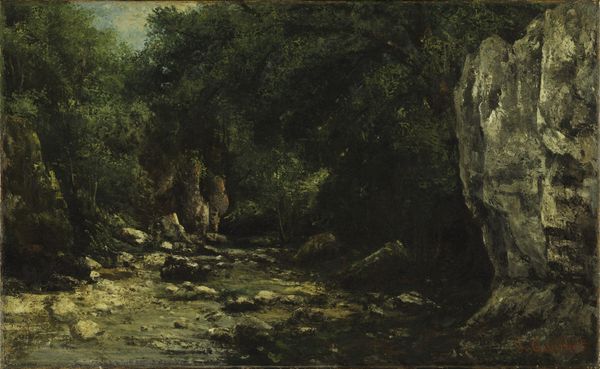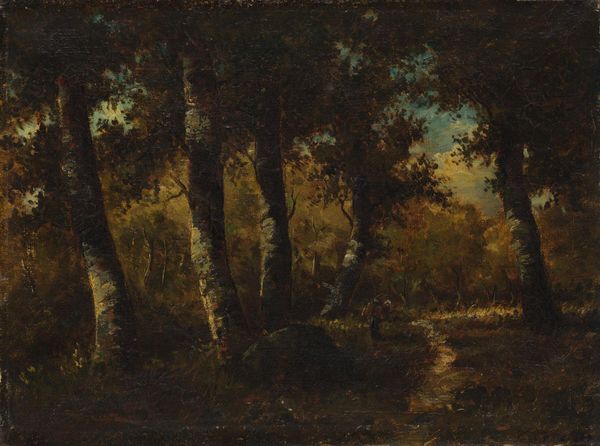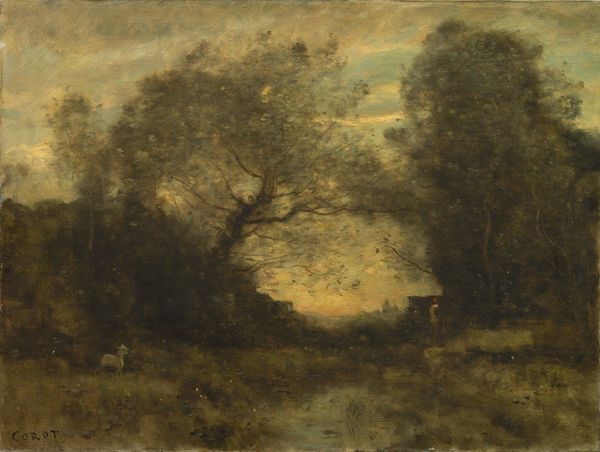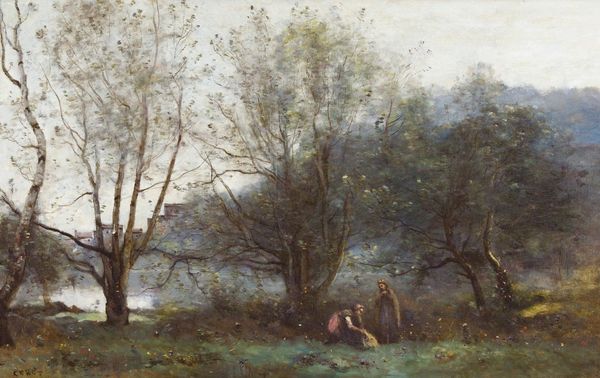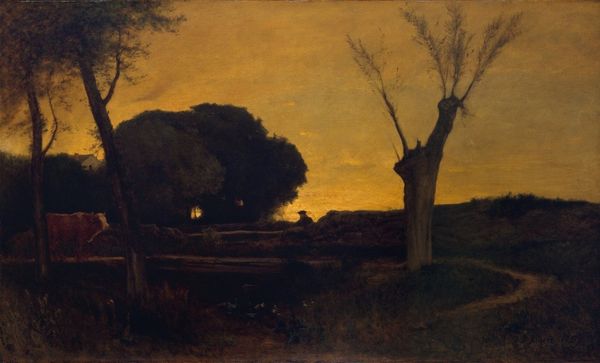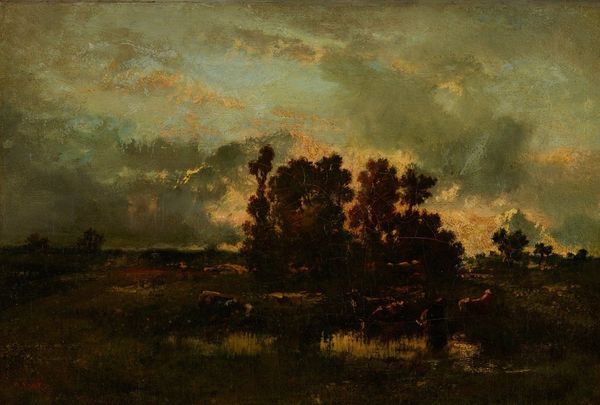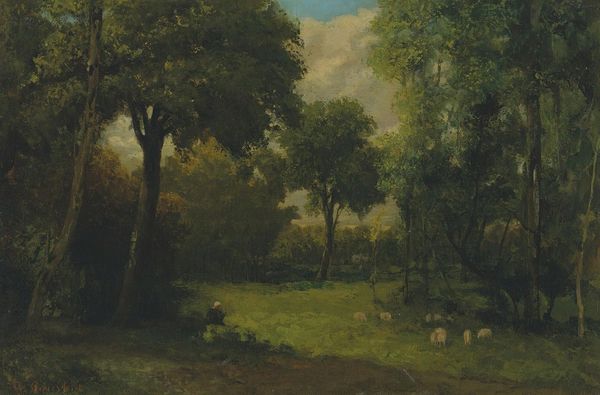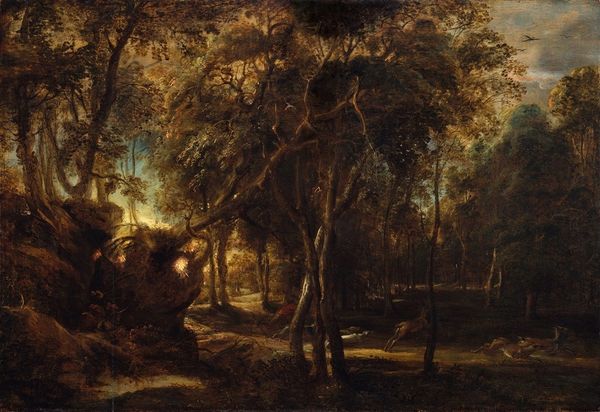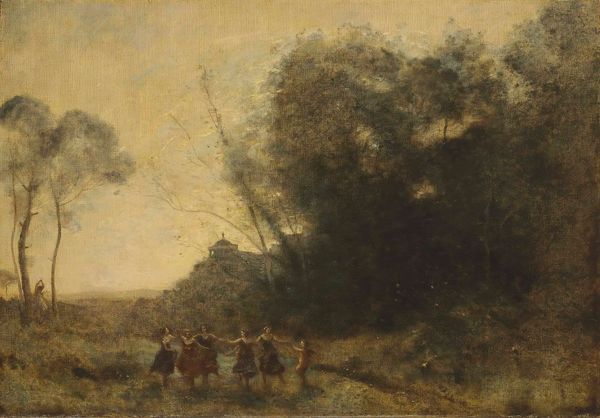
Copyright: Public Domain: Artvee
Editor: We’re looking at “The Dell,” an 1878 oil painting by Thomas Moran. I’m struck by the darkness, the shadowed foreground… it feels like a stage set, waiting for something to happen. What do you see when you look at it? Curator: I see a careful arrangement of forms and values, first and foremost. Note how the composition is built upon a series of interlocking diagonals. The light, though scarce, is strategically placed to guide the eye through the space. Do you observe the way the artist contrasts rough textures with smooth, organic shapes with geometric? Editor: Yes, I see that now. The way the jagged rocks in the foreground lead to the softer forms of the trees and figures… almost a pathway. It's interesting you focus on composition. Does that make it less about nature itself, then? Curator: Not necessarily less about nature, but more about how nature is perceived and constructed through the artistic process. Moran uses specific formal elements - line, shape, color, and texture - to convey a particular emotional and intellectual response to the landscape. Think about the interplay of warm and cool colors and the strategic value contrast that lends itself to create depth and pull your gaze inward. Editor: So it's not just about copying nature, but creating a feeling, through a deliberate artistic vocabulary. Curator: Precisely. The figures almost disappear into the light, functioning primarily as points of contrast within the overarching design. How might the use of space communicate about nature itself, here? Editor: Thinking about it that way really unlocks a new way of viewing this piece. I was focused on what was represented, rather than how it was being represented. Curator: That is often the most important and insightful approach to understanding any work of art. Thank you for observing with such dedication.
Comments
No comments
Be the first to comment and join the conversation on the ultimate creative platform.
